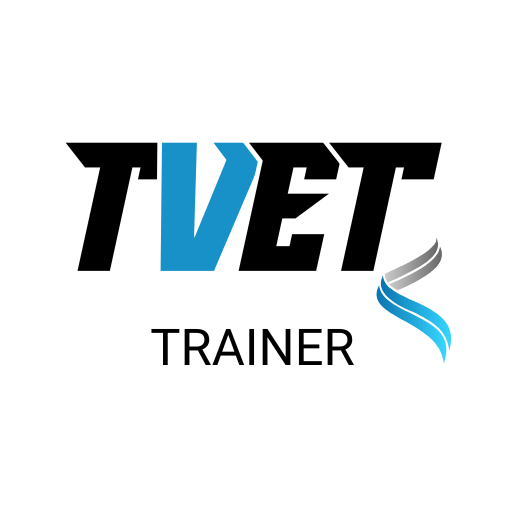In any job market, vocational training has become increasingly important for individuals seeking to develop practical skills and secure employment. Effective vocational training programmes require a well-structured and learner-centric approach, where instructional design comes into play.
Instructional design is the systematic process of creating educational materials and learning experiences that facilitate the acquisition of knowledge, skills, and attitudes. It involves the application of various theories, models, and strategies to ensure that training programmes are engaging, effective, and aligned with the learners' needs and the desired learning outcomes.
This article provides a practical guide to the basics of instructional design for vocational training programmes. By understanding and applying these principles, vocational trainers can create learning experiences that are engaging, relevant, and effective in preparing learners for their chosen careers.
The article will cover the definition and importance of instructional design in vocational training, key principles to consider, the instructional design process, and practical tips for creating effective vocational training programmes.
Understanding Instructional Design
Instructional design is the process of creating instructional materials and learning experiences that facilitate the acquisition of knowledge, skills, and attitudes. It involves systematically planning, developing, and evaluating learning programmes to meet learners' needs and achieve the desired learning outcomes.
The concept of instructional design has its roots in the 1940s, when the US military began to develop systematic approaches to training soldiers during World War II. Over the years, instructional design has evolved, incorporating theories from various disciplines such as psychology, education, and communication.
In vocational training, instructional design is essential for creating learning experiences that are relevant, engaging, and effective in preparing learners for their chosen careers. By applying instructional design principles, vocational trainers can ensure that their programmes are aligned with industry standards, meet the learners' needs, and lead to measurable learning outcomes.
Key Principles of Instructional Design
Learner-Centred Approach
Effective vocational training programmes should meet learners' needs, preferences, and prior knowledge. This means considering age, learning styles, cultural backgrounds, and any special needs or accommodations required.
- Goal-Oriented: Setting clear, measurable, and achievable goals is essential for creating effective vocational training programmes. These goals should be aligned with the learners' needs, industry standards, and the overall objectives of the training programme.
- Engagement: Keeping learners engaged and motivated is essential for effective learning. Vocational trainers can achieve this by incorporating interactive activities, hands-on experiences, and real-world scenarios into their training programmes.
- Feedback and Assessment: Regular feedback and assessment are essential for tracking learners' progress and improving learning outcomes. Vocational trainers should provide timely and constructive feedback to learners and use assessment data to refine and improve their training programmes.
Steps in the Instructional Design Process
- Needs Analysis: The first step in the instructional design process is to conduct a needs analysis. This involves identifying the training needs, analysing the learners and their contexts, and determining the desired learning outcomes.
- Design: Once the needs analysis is complete, the next step is to design the training programme. This includes developing learning objectives, creating a detailed course outline, and selecting appropriate instructional strategies and media.
- Development: During the development phase, vocational trainers create instructional materials and integrate multimedia elements such as videos, simulations, and interactive exercises.
- Implementation: The implementation phase involves delivering the training programme and ensuring that necessary resources and support are available to learners.
- Evaluation: Evaluation is an ongoing process throughout the instructional design process. Vocational trainers should conduct formative evaluations during the course to assess learners' progress and make necessary adjustments—summative evaluations at the end of the course to determine the overall effectiveness of the training programme.
Practical Tips for Effective Vocational Training Design
- Aligning with Industry Standards: Vocational training programmes should be designed to meet industry standards and job market requirements. This ensures that learners acquire skills that are relevant and in demand in their chosen careers.
- Hands-On Learning: Incorporating practical, hands-on activities into vocational training programmes is essential for reinforcing theoretical knowledge and developing practical skills. Vocational trainers should provide learners with opportunities to apply their knowledge in real-world scenarios and receive feedback on their performance.
- Use of Technology: Technology can be a powerful tool for enhancing vocational training programmes. Vocational trainers can use technology for simulations, virtual labs, and online resources to provide learners with engaging and interactive learning experiences.
- Customisation: Vocational training programmes should be designed to accommodate different learning styles and paces. This means providing learners with options for engaging with the material and allowing them to progress at a pace that suits their needs.
- Continuous Improvement: Vocational training programmes should be regularly updated and refined based on feedback and technological advancements. Vocational trainers should continuously seek new and innovative ways to enhance their training programmes and ensure they remain relevant and practical.
Conclusion
In conclusion, instructional design is an important component of effective vocational training programmes. By applying key principles such as learner-centred approach, goal-orientation, engagement, and feedback and assessment, vocational trainers can create learning experiences that are relevant, engaging, and effective in preparing learners for their chosen careers.
Effective vocational training programmes require a well-structured and learner-centric approach, where instructional design comes into play. By applying instructional design principles, vocational trainers can ensure that their programmes are aligned with industry standards, meet the learners' needs, and lead to measurable learning outcomes.
Vocational trainers are encouraged to apply the basics of instructional design in their training programmes to enhance effectiveness and learner satisfaction. By staying up-to-date with the latest trends and best practices in instructional design, vocational trainers can ensure that their programmes remain relevant and effective.
Online Courses
FAQs
What is instructional design in vocational training?
Instructional design in vocational training is the systematic process of creating educational materials and learning experiences that facilitate the acquisition of knowledge, skills, and attitudes specific to a particular vocation or trade. It involves applying various theories, models, and strategies to ensure that training programmes are engaging, effective, and aligned with learners' needs and desired learning outcomes. In vocational training, instructional design is important for developing programmes relevant to industry standards, meeting learners' needs, leading to measurable learning outcomes, and ultimately preparing individuals for their chosen careers.
What are the key principles of instructional design for vocational training?
The key instructional design principles for vocational training include a learner-centred approach, goal orientation, engagement, and feedback and assessment. A learner-centred approach considers learners' needs, preferences, and prior knowledge. Goal orientation involves setting clear, measurable, and achievable goals aligned with industry standards. Engagement is essential for keeping learners motivated through interactive activities and real-world scenarios. Regular feedback and assessment are essential for tracking learners' progress and improving learning outcomes. By applying these principles, vocational trainers can create effective and engaging learning experiences that prepare learners for their chosen careers.
What are the steps in the instructional design process for vocational training?
The instructional design process for vocational training typically involves five main steps: needs analysis, design, development, implementation, and evaluation. Needs analysis involves identifying training needs and desired learning outcomes. The design phase includes developing learning objectives and selecting appropriate instructional strategies. During development, trainers create instructional materials and integrate multimedia elements. Implementation involves delivering the training programme and ensuring necessary resources are available. Evaluation is an ongoing process, including formative evaluations during the course and summative evaluations at the end to determine overall effectiveness. This systematic approach ensures that vocational training programmes are well-structured and meet the needs of learners and industry standards.
How can technology be incorporated into vocational training programmes?
Technology can be a powerful tool for enhancing vocational training programmes by providing engaging and interactive learning experiences. Vocational trainers can use technology in various ways, such as simulations to replicate real-world scenarios, virtual labs for practical skills development, and online resources for supplementary learning materials. Additionally, technology can facilitate remote learning, allowing learners to access training materials and participate in courses from anywhere. By incorporating technology effectively, vocational trainers can create more dynamic and flexible learning environments that cater to different learning styles and prepare learners for the increasingly digital workplace.
Why is continuous improvement important in vocational training programmes?
Continuous improvement in vocational training programmes is essential to ensure they remain relevant, effective, and aligned with industry standards. The job market and industry requirements constantly evolve, and vocational training programmes must adapt accordingly. By regularly updating and refining their programmes based on feedback, technological advancements, and changes in industry practices, vocational trainers can ensure that learners acquire the most up-to-date skills and knowledge. This commitment to continuous improvement demonstrates to learners and employers that the training programme is dedicated to maintaining high standards and producing well-prepared graduates ready for the workforce.







